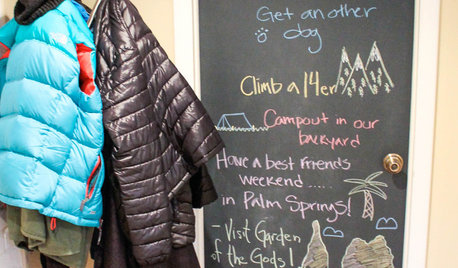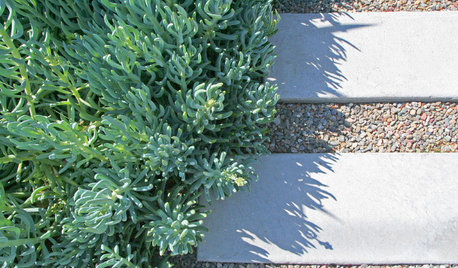Outdoor butterflies on a stick?
loribee2
13 years ago
Related Stories

GARDENING FOR BUTTERFLIESBe a Butterfly Savior — Garden for the Monarchs
Keep hope, beauty and kindness alive in the landscape by providing a refuge for these threatened enchanters
Full Story
ORGANIZINGStick to Your Resolutions: Help From a Pro Organizer
Accomplish your goals — from decluttering to rediscovering fitness — for real this time
Full Story
BLUE AND GRAY FOLIAGEGreat Design Plant: Blue Chalk Sticks
Great color and texture make this drought-tolerant succulent a favorite for landscape designs
Full Story
GARDENING AND LANDSCAPING9 Flowers That Draw Butterflies
Charm winged beauties and human visitors alike with these enticing, fragrant and colorful blooms for the garden
Full Story
EARTH DAYCreate a Container Wildlife Habitat for Hummingbirds and Butterflies
Don’t let limited space prevent you from welcoming wildlife into your garden
Full Story
GARDENING GUIDESGreat Design Plant: Butterfly-Friendly Crossvine
Colorful climber gives gardens a boost year-round with bountiful blooms
Full Story
GARDENING FOR BUTTERFLIES7 Native Wildflowers to Make You an Awesome Butterfly Host
Offer the leaves of these and you’ll get more butterflies than with flower nectar alone
Full Story
GARDENING GUIDES20 Favorite Flowers for Butterflies and Bouquets
Discover perennials and annuals that do double duty as butterfly magnets and versatile cut flowers
Full Story
FLOWERS AND PLANTSHelp Monarchs and Other Butterflies by Planting Common Milkweed
Summer-blooming Asclepias syriaca is an important larval host plant for the monarch butterfly and attracts a number of pollinating insects
Full Story
GARDENING GUIDESGreat Design Plant: Butterfly Milkweed, a Beacon in the Prairie
Vivacious orange flowers for you, nectar for the butterflies and bees. Asclepias tuberosa is worth planting for more reasons than one
Full Story





concretenprimroses
Calamity_J
Related Professionals
Ashburn Glass & Shower Door Dealers · Pflugerville Glass & Shower Door Dealers · Wichita Window Contractors · Coral Terrace Window Contractors · Emeryville Window Contractors · Tahoe City Interior Designers & Decorators · Auburn Custom Closet Designers · Falls Church Custom Closet Designers · Oshkosh Custom Closet Designers · Ossining Custom Closet Designers · Riverside Window Contractors · Safety Harbor Window Contractors · Bloomington Window Contractors · Edmonds Window Contractors · Suamico Window Contractorsloribee2Original Author
texaswild
loribee2Original Author
texaswild
loribee2Original Author
texaswild
loribee2Original Author
texaswild
loribee2Original Author